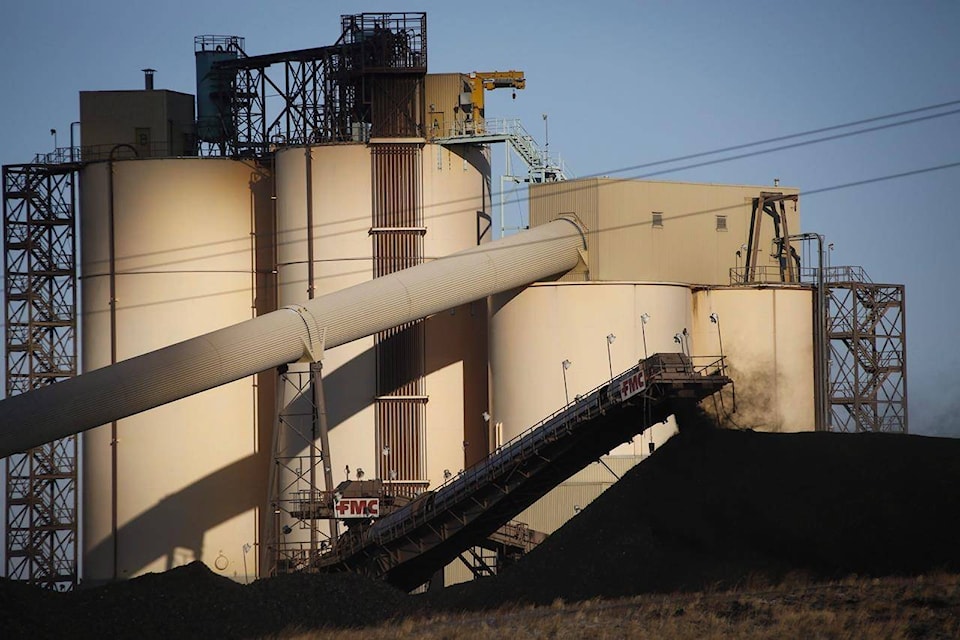Coal mining is already having an impact in Alberta’s Rocky Mountains even as debate intensifies over the industry’s presence in one of the province’s most beloved landscapes.
“They’ve been very active up there,” said Kevin Van Tighem, who lives near one of the areas now heavily leased for coal exploration.
The United Conservative government’s decision to revoke a policy that had protected the eastern slopes of the Rockies from open-pit coal mining since 1976 has convulsed the province.
Petitions opposing the move have gathered more than 100,000 signatures. Popular Alberta entertainment figures have come out against it and area ranchers and First Nations are trying to force a judicial review of the decision.
Documents from the Alberta Energy Regulator show that permission has already been granted for hundreds of drill sites and kilometres of roads threading through critical wildlife habitat and land previously untouched by mining.
“The day after the coal policy was rescinded we started seeing applications for exploration,” said Katie Morrison of the Canadian Parks and Wilderness Society.
“Before we’ve done any real assessments of the impacts, we’re seeing these companies have some potential pretty big impacts on that land.”
Documents filed with the regulator give some sense of what’s already been permitted.
Cabin Ridge Coal, operating 50 kilometres north of Coleman, Alta., is putting in 197 drill sites on land once protected by the coal policy.
It plans 15 new access roads and 19 “reactivated” roads — abandoned for decades and now being refurbished. The exploration plans require nine new stream crossings.
Elan Coal, north of Blairmore, Alta., has been permitted for 456 drill sites that include 66 kilometres of new roads and 29 kilometres of reactivated roads.
Montem Resources, active south of Coleman, has the OK for 71 drill sites with an unspecified length of “new and existing access.”
Almost all of the drill sites are on grizzly bear range. Mountain goat and sheep habitat will be affected.
Company plans detail how environmental impacts are to be reduced by careful construction and timing work for when it will cause the least disruption. They suggest the amount of land directly disturbed will be small — less than 100 hectares for Cabin Ridge.
That’s not the whole story, said Van Tighem, a former chief superintendent of Banff National Park.
Wildlife steer clear of active roads and drill sites by up to 500 metres, he said. Roads cut into hillsides — no matter how well built — are “erosion traps” and roads that run uphill are “sluiceways” for run-off that would normally feed streams, he said.
Mitigation measures aren’t all they’re cracked up to be, he added.
“They’re not ever as good as (companies) promise and not as consistently applied as the government would lead us to believe.”
Morrison points out that at least twice since the coal policy was revoked, companies have asked for exemptions to rules that prevented them from operating during sensitive times for wildlife.
“Both exemptions were applied for, granted and work started within a day or two,” she said. “That doesn’t scream rigour to me as far as decreasing impact.”
Peter Brodsky, spokesman for Energy Minister Sonya Savage, said the government takes public concern seriously. This week, it paused all lease sales on formerly protected land and cancelled a small number of them, refunding $80,000.
“The department will be working with Alberta Environment to determine next steps to best address the concerns that have been raised,” he said in an email.
“We will not choose between protecting the land for future generations and providing economic opportunities. We need to — and will — do both, in a measured and environmentally responsible way.”
Area rancher Gordon Cartwright looks up into the hills on his neighbour’s land and recalls what a geologist told him last summer about what his neck of the foothills looks like.
“He said, with the intensity of the operations and the drilling, it looked more like mining preparation than exploration,” Cartwright said.
“That activity’s pretty damaging. A lot of these soils are highly susceptible to erosion and are hard to re-vegetate.
“You would have thought consultation would have happened before you start opening up the country and creating that kind of disturbance.”
Bob Weber, The Canadian Press
